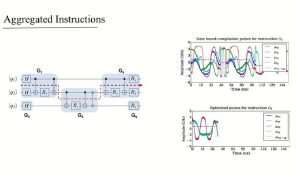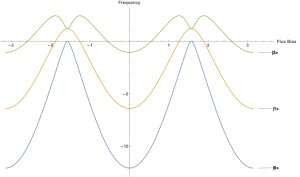New textbook advances 'quantum computer systems design' to get the most out of quantum hardware

Researchers at the University of Chicago have written a book that illustrates how a new discipline of "quantum computer systems design" can dramatically improve the reliability and resource efficiency of quantum machines, short-circuiting years of hardware improvements necessary to run practical applications.
Authors Yongshan Ding and Fred Chong show that the key is to co-design quantum software and hardware in concert, exposing select physical details for software to optimize. To do this, a quantum computer systems designer must be trained in both software techniques and device physics. Additionally, a systematic approach must be taken to evaluate the design space of possible options and find optimal solutions.
The book details a number of case studies to demonstrate optimization opportunities in different aspects of a quantum computer system. These include quantum circuit synthesis, pulse control of quantum bits, and error mitigation.Getting the system correct is also discussed, including quantum programming language and debugger design, as well as classical simulation of the quantum system.
Here are three example optimizations from the book:
First, compilers can target not only a specific program input and machine size, but the condition of each qubit and link between qubits on a particular day! Several recent quantum circuit mapping and scheduling techniques use heuristics to optimize for specific program input, physical machine size, and physical topology. Two studies from Princeton (Figure 1) and GATech go even further, observing from IBM daily calibration data that qubits and links between qubits vary substantially in their error rate. These compilers take these daily variations into account and optimize to increase the probability of correct program output. An upcoming follow-on study demonstrates that this approach substantially reduces error rate as compared to native compilers for the IBM, Rigetti, and UMD quantum machines.

Second, instead of compiling to an instruction set, compilers can directly target a set of analog control pulses. The idea of optimizing control pulses has long been used in practice to determine pulse sequences for one- and two-qubit operations. In fact, a "traditional" quantum compilation flow would compile a high-level language down to a quantum assembly composed of 1- and 2-qubit operations, and then use a table of precomputed pulse sequences to translate each assembly instruction individually. It turns out that we can obtain much greater efficiency if we give an optimizer larger blocks (e.g. 10-qubit functions) of computation and directly translate the larger block into custom control pulses. This can be done by performing a gradient ascent search from the start state of an n-bit quantum vector to the end state. The gradient ascent solver only scales to about 10-qubits, so the compiler must partition the code into good blocks to give to the solver. There is much work to be done in this direction, but initial results (Figure 2) show that execution time can be reduced by 6-10X.

Third, instead of using binary logic to target two-level qubits, compilers can target n-ary logic composed of qudits. Recent work with qutrits has been particularly promising. In particular, quantum computations use a lot of temporary qubits (called ancilla). Ancilla bits are particularly necessary when performing arithmetic, since all quantum computations must be reversible (in order to conserve energy and avoid collapsing the quantum system to a classical state). Classical arithmetic can be computed with a universal NAND gate, but a NAND has two input bits and one output bit. It is impossible to reverse a NAND, since one output bit is not enough information to fully specify the two input bit values. The smallest universal reversible logic gate is three input and three output, which can simulate a NAND, but one input and two outputs end up being ancilla. Consequently, arithmetic in quantum computations (which is very common), generates many ancilla.
Qutrits (Figure 3) allow us to essentially generate ancilla by borrowing a third energy state in a quantum device to hold extra information. This approach is so powerful that it can asymptotically change the critical path on quantum circuits when a machine has a constrained number of physical devices. The tradeoff, however, is that the third energy state generally is more susceptible to errors than the first two states used for binary qubits. Fortunately, noise models show that overall error can be decreased with qutrits. This is because computations require less time, and the third state is not always in use.
The book, "Quantum Computer Systems: Research for Noisy Intermediate-Scale Quantum Computers," by Yongshan Ding and Frederic Chong, is published by Morgan Claypool and is available for free download at most major universities that already subscribe to their series of "Synthesis Lectures." The synthesis series is intended as a set of primers to help researchers get started in cutting-edge fields. Ding and Chong also plan to develop online coding exercises and EdX lectures to complement the book.
More information:
Yongshan Ding et al. Quantum Computer Systems: Research for Noisy Intermediate-Scale Quantum Computers, Synthesis Lectures on Computer Architecture (2020). DOI: 10.2200/S01014ED1V01Y202005CAC051
Provided by University of Chicago